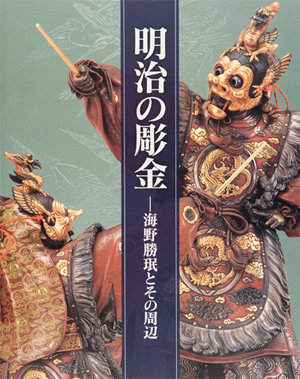| image | information |
|---|---|
 |
The term “metal carving” means the ornamental technique of carving metal surfaces with chisels, openwork, and inlay of different metals. Japanese metal carving developed greatly from the Momoyama to Edo periods, through the creating of sword fittings, and these techniques were used for other small metal products also. Along with the Meiji restoration, the issue of the sword prohibition, etc., caused the demand for metal carved works to decrease drastically, causing it to temporarily decline, but vases and cigar boxes matching western life styles became the new bases for metal carving techniques. Furthermore, from the late 19th century, a large amount of framed work and figurines made with metalwork were exhibited in the expositions held in Japan and other countries, helping to discover new possibilities for the intricate metal carving techniques. Metal carving techniques were applied on various furniture, and the Meiji era when these variations were extensively used was the time when the metal carving techniques were spotlighted the most. In this exhibition, we will introduce various superior metal carving works focusing on the works of Unno Shomin, the metal carving master representative of this Meiji era, and the others around him. Unno's Bugaku dancer, Ranryo-o, received the Myoji (technical excellence) 1st class prize at the 3rd Nationa1 Exhibition of 1890, and this along with the Bugaku dancer, Taiheiraku, exhibited in the 1900 Paris Exhibition, are not only representative works of Unno, but also of the Meiji era metalwork. Furthermore, The Pair of six fold screens with shikishi cards that was presented on the occasion of the 25th anniversary of the marriage of Emperor Meiji, is a collaboration of 17 metal carving artists lead by Unno, and a historically valuable piece. We hope the viewers of this exhibition are able to become familiar with masterpiece of Meiji era metal carving works, and also have a chance to perceive the high level techniques and expressions. |